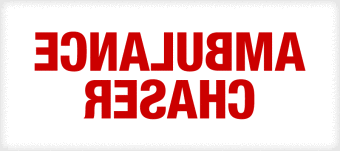 Consulting is a great option for physicians, whether it is for a boutique or “Big Four” firm… but one caveat: know what you’re signing up for.
Consulting is a great option for physicians, whether it is for a boutique or “Big Four” firm… but one caveat: know what you’re signing up for.
I know of which I speak. For a number of years I was one of the road-warriors that worked for a Big Four firm – in my case, Accenture (formerly Andersen Consulting), as a Senior Change Management Consultant. It was an incredible, exhausting career – with both big highs, and big lows.
I saw a posting the other day for a “Physician Management Consultant”, and it made me think. The location of the role was stated as “Virtual – Candidates can be located anywhere near a major airport within the Continental U.S.”. And did this bring back memories of my life as a management consultant, oh yes.
When I joined Accenture, I was working hard in graduate school, getting my degree in clinical psychology. When the interest came from them to recruit me, I thought “why not”, what would I have to lose? I thought I would try management consulting for 6 months to a year (which was as long as I could convince them to hold my place in the Ph.D. program), was sure that I wouldn’t enjoy it, and was convinced I’d be back completing my degree by the following winter. Well, that didn’t actually happen. Management consulting turned out to be more interesting than I expected… more rewarding financially than graduate school or an entry level role for a Ph.D. clinician (go figure!)… and more exciting, more fun. So I stayed … and learned things on the ground in global organizations that I never would have gained by staying in a clinical career. It was fascinating work - and exhausting, demanding work too… physically, emotionally, and intellectually. During my tenure I learned things about myself, about how the corporate world works, about priorities and “bottom-lines”, and about how people function professionally and personally in the context of their work.
In my role as a physician executive coach I’ve worked with docs who have decided they wanted to leave the clinical world to go work for one of the big consulting firms. They may be attracted by the possibility of utilizing their expertise in a bigger way, by the credibility of affiliating themselves with a “top firm”, by the glamour that a consulting role seems to hold. I support whatever non-clinical path my clients feel is the right fit for them, but I do feel strongly about giving my docs a “reality-check” when it comes to the lifestyle and demands associated with management consulting. I’ve been there, I’ve done that. Until you’ve been in the trenches it is hard to know what it is really like.
So for any of you physicians interested in a non-clinical career in consulting, here are my thoughts: I call it “Management Consulting 101” or simply, “Know What You’re Getting Into”.
Expectations
The expectations for consultants can be both overt (shared in hiring/orientation) or more subtle - inherently part of the culture and used to assess whether you as an individual are both “cut out for” consulting or will be successful in the firm.
Regardless of whether it is a large firm or smaller, boutique outfit, these expectations are pretty much the same:
- Be willing to go anywhere, anytime – the clients’ needs always come first
- You must have complete mobility – and be highly adaptable to new situations, new teams, new problems to solve, and new locations
- You must deal well with sharp learning curves and high expectations from clients – you must add value from the moment you arrive on a new client site, and hit the ground running
- You must have the ability to collaborate on larger, mixed consultant/client teams, and be skilled in managing conflict/challenges that arise
- You must have incredibly high levels of professionalism, communication and accountability, and the ability to deliver results, and to truly “team” (i.e., trust your team-mates, delegate, work together for a common goal, stay accountable and meet expected outcomes)
In my experience these are things that most physicians who choose consulting either have a natural affinity for, or are able to get their arms around and excel in. However, there are some who have gotten tripped up over their lack of awareness of these expectations, or their lack of preparation / skill in these areas. The good news is that these are things that can be learned, either on the ground (although this may make your learning curve a little steeper and longer), or with some specialized, up-front skill development while still in clinical practice. The key is knowing what the expectations are for consulting work, and doing some introspective work to assess yourself on both your interest and skill level in these areas. Then find someone who can help you develop – either learning from a colleague who is in consulting already, or finding a mentor who will help you walk through the steps, working with a coach, or getting feedback from a supportive peer.
Lifestyle
One of the hardest things in consulting is the lifestyle. Many docs I work with are unclear about how the work is done, and expect that they will be able to conduct their consulting projects within their home area, and travel only occasionally. Unless you live in a major metropolitan area that houses the headquarters of the kinds of organizations that you want to specialize in (e.g., Pharma, Biotech, etc.), and there is a demand for projects in your area, you will be on the road. This is one thing when you are young, enthusiastic, and have no family ties to keep you in one place. Then consulting, and the significant travel it requires, is exciting and an incredible opportunity to travel the world for work.
But when you have a family, or ties to one geographic location, the option of consulting work is a little more complicated. The truth of the matter is that you go where the work is. It is a fact of life, and one that was well-validated by the online posting for the Physician Consultant that I mentioned above.
So a reality check about the consulting lifestyle?
- Get used to being a “road warrior” – remember that movie with George Clooney called “Up In The Air”? That was my life, and is the life of many, many management consultants. It is more typical than not.
- You will have to spend a lot of time away from your home location and family – The majority of my consulting life I was out-of-town Mondays through Thursdays/Fridays, depending on whether the client demanded that I be “in office” on Fridays. Most consultants do the same thing. If you have a very forgiving client, or belong to a firm that highly values the personal needs of their employees, you may be able to do a Monday-Wednesday and work virtually Thursday and Friday, or some combination thereof. But don’t count on it.
- Be “on call” to fly wherever, whenever – again, the clients’ needs come first – if they need you on a plane at 6am the next morning, get your bag packed, and arrive at the airport at 5:00am with a smile.
- Get to know, and love, your home airport – once you know the routines of your home airport it will be as familiar to you as your own house. Get to know your regular gate crew (if you’re flying the same airline most of the time, which you should), they will be nice to you, which is always a good thing when you’re trying to upgrade, standby, or get priority seating.
- Get to love hotels – this too is a reality of the consulting lifestyle … while often fun at first, hotels become just that, hotels, after a while. If you can maintain a routine and take advantage of their perks (i.e., gyms, room service, hotel points, etc.), you will start to find your own rhythm to make yourself at home.
- Long hours, high client demands – you will be adding value from the moment you arrive on-site to the moment you leave (consultant’s rule of thumb? You should always arrive before your client, and leave after them). You are your bill-rate, and the client doesn’t forget that. You can’t either.
- Changing teams – don’t get attached! One thing that is true is that you can be working with a team of people for months, and then all of a sudden have the team disbanded and the project ended at the need of the client. Another rule of thumb – don’t get too attached to any one project team, or any one organization. Before you know it, you’re flying to another city to be part of another team.
Now I don’t want to give the impression that management consulting is all hard and difficult. There are elements to it that are incredible and unique – you will never do work like it. Some of the reasons why people do it, and find it incredibly rewarding (including me!):
- You have the opportunity to work on exciting teams, doing exciting, cutting-edge work: Everything that is done in consulting work is the latest and greatest. You will have the chance to meet and work with incredibly smart professionals, who are passionate and interested in the same things you are. You will be learning the newest methodologies, technologies, and processes in your given field, and you will be able to apply your medical knowledge/experience in a way that supports your clients’/projects’ efforts and success. You will see tangible results of your work in finite time periods.
- You will be able to travel internationally, collaborating with global teams/clients: This is an incredible learning opportunity, both as a professional and as a human being. One of my favorite parts of my work at Accenture was collaborating with colleagues in Sweden, Japan, Australia, and Germany (to name a few) on different clients/projects, to solve different problems.
- Air miles! This starts to matter. Some of the best vacations my husband and I took were during my tenure with Accenture, since all of those hotel points and air miles start to rack up and provide the wonderful opportunity for free international travel (China! Australia! Greece! Spain! Italy!) and free hotel stays. Not too shabby.
- Interesting, changing work: One of the best things about management consulting is that it never gets dull. Your intellectual and “EQ” (Emotional Intelligence) abilities are constantly put to the test, as you are required to solve your clients’ problems in different ways, with different people, and in different organizational cultures, on a regular basis. If you like change and variety, then consulting work provides that. If you are a natural problem-solver, like many physicians, you will feel right at home with the challenges that your clients provide you with. Consulting is not for everybody, but it could very well be for you. Only you can decide that.
For further reading on management consulting as a non-clinical career choice, I recommend the book “Management Consulting Today and Tomorrow: Perspectives and Advice from 27 Leading World Experts” (2009, by Larry Greiner and Flemming Poulfelt).
Another very good resource was written by a consultant, titled: “How to Get Into the Top Consulting Firms: A Surefire Case Interview Method” (2009, by Tim Darling). It provides not only a realistic overview of the consulting lifestyle (who succeeds, what it’s like, what you need), but also provides a primer for making yourself a desirable candidate (how to succeed in a problem-solving interview, resume prep, etc.). I highly recommend this book if you’re even thinking about consulting as a non-clinical option.
 Making way for your creativity.
Making way for your creativity.




 1 Comment
1 Comment



